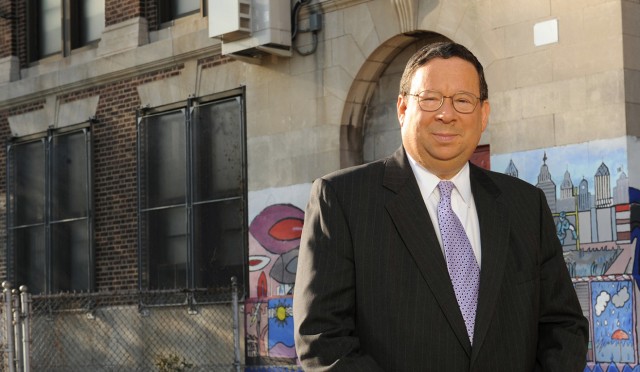 For more than a decade, there has been a national debate about how to close the digital divide: the gap between those who are connected to high-speed Internet at home and those who are not. The issue not only has a profound impact on individual families, but also on our region’s business owners, economy builders, and employers.
For more than a decade, there has been a national debate about how to close the digital divide: the gap between those who are connected to high-speed Internet at home and those who are not. The issue not only has a profound impact on individual families, but also on our region’s business owners, economy builders, and employers.
Because of the digital divide, millions of low-income Americans lack basic digital literacy skills that make them unqualified to fill higher-paying, 21st Century jobs. Middle-skill jobs, defined as those that require more than a high school education, but less than a bachelor’s degree, comprise 39 percent of U.S. employment. These are vital jobs like police officers, electricians, paralegals, dental hygienists, and registered nurses.
A study of job postings by Burning Glass Technologies found nearly eight in ten middle-skill jobs require digital skills, like managing spreadsheets or word processing software applications. They also found digitally intensive, middle-skill occupations are growing two and a half times faster than middle-skill jobs that do not require digital skills.
Digital tools are reinventing work. Waiters use iPads to take orders, hotel cleaning crews use hand held devices to notify the front desk a room is ready in real time, and our cable installers are using increasingly sophisticated Internet-enabled tools.
Digitally intensive middle-skill occupations also pay 18 percent higher wages on average than jobs that don’t require digital skills. This means the more people cross the digital divide, the more their families will improve their standard of living.
In August 2011, Comcast launched Internet Essentials, which we designed to address all three causes of the digital divide. Offered to low-income families with at least one child eligible to participate in the National School Lunch Program, it offers low-cost, high-speed Internet service for $9.95 a month (with no installation or equipment rental fees), the option to purchase a heavily subsidized computer for less than $150, and digital literacy training in print, online, and in person.
Through the end of June 2015, more than 500,000 families have signed up for the program, benefitting more than 2 million low-income Americans. In Philadelphia, we’ve connected more than 70,000 low-income residents and, over the past five years, we’ve seen broadband adoption rates in the region increase from 70.7 percent to 76.4 percent.
We’re also piloting a program for low-income, community college students who receive Federal Pell Grants, the same population that fills middle-skill jobs, because the path to receiving an associate’s degree is a struggle. Only 13 percent of students in the lowest income quartile who started at a two-year college completed an associate degree within six years.
While we’re proud of Internet Essentials, which has grown into the largest and most comprehensive broadband adoption program in the country, we’ve learned no single company or government program will be able to close the digital divide alone.
What can you or your company do to help? You could volunteer at or help fund a nonprofit like Philadelphia Opportunities Industrialization Center, Boys & Girls Clubs, Big Brothers Big Sisters, YMCAs, or Police Athletic Leagues, all of which offer computer training programs. You could donate used computer equipment to the Philadelphia Children’s Foundation, UPenn’s CommuniTech, or a local school. You could support the Free Library of Philadelphia, which has one of the most ambitious digital literacy programs in the country. You could help spread the word about Internet Essentials by visiting www.internetessentials.com.
Increasing awareness about the impact of the digital divide in the business community can not only help bring more resources to address an essential social justice to America, but it can strengthen our region’s economy as well.
David L. Cohen is senior executive vice president and chief diversity officer of Comcast Corp.

